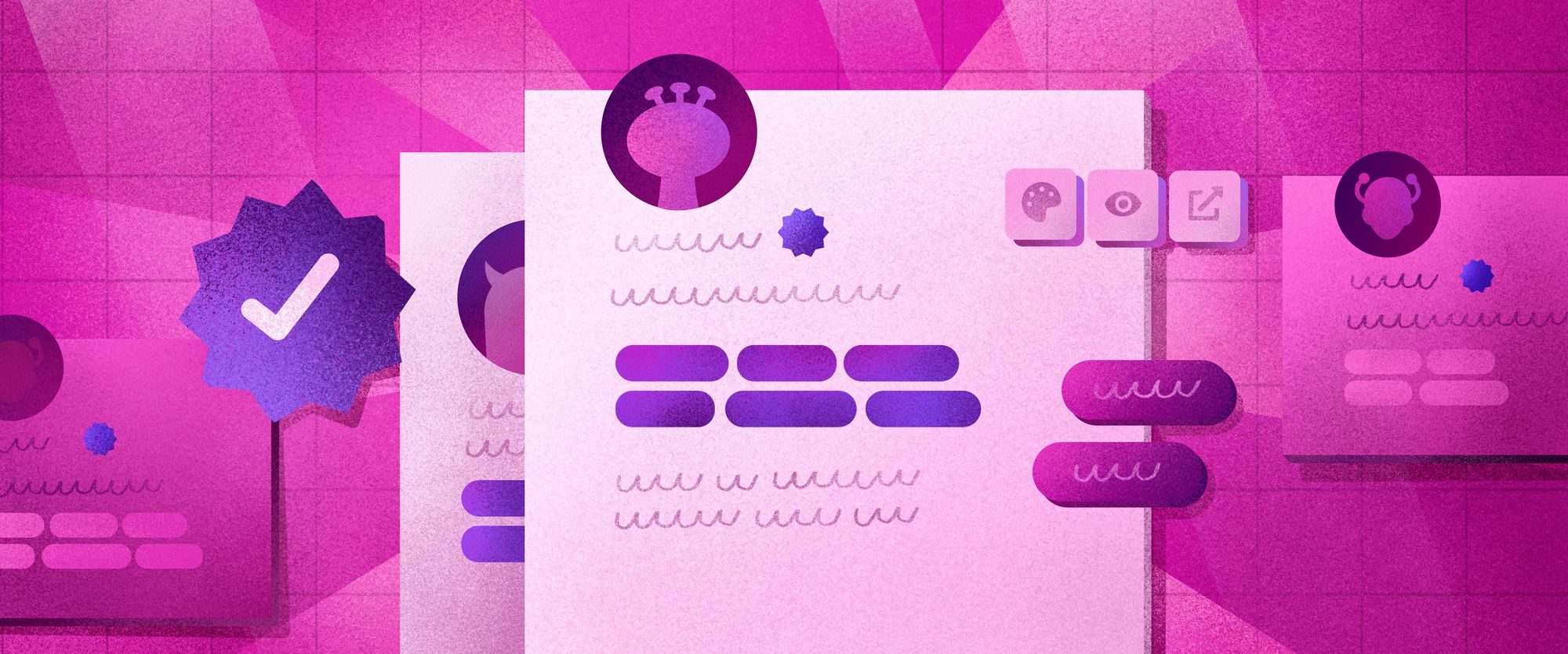The working world today looks substantially different than it did even just five years ago. With the rise in technology, remote work, side projects, and the influx of young millennials and Gen Zers bringing new ideas into the workforce, professional norms are evolving. That includes the shifting of rules for creating a strong and effective resume.
The makings of a modern resume
We understand that you may not be quite ready for the anti-resume. But that doesn’t mean there aren’t new and creative ways to showcase your talents. Below, we outline six tactics for how to adapt your resume — and stand out — in the future of work.
1. Show your whole self—including your side jobs and projects
In the past, the purpose of a resume has been to walk potential employers chronologically through your career, from degree to entry-level position, through each consecutive rung up the ladder. But today, more workers than ever have non-linear career paths and multiple jobs, independent projects, and side hustles, all of which make up one’s professional story. In fact, earlier this year, a survey found that 40% of workers in their 20s have at least one side job in addition to their full-time careers.
Your resume should highlight all the work you do—not just the official, salaried work.
Your resume should highlight all the work you do—not just the official, salaried work. Often, the skills you develop and display during a side project are just as relevant as the ones you garner in a 9 to 5. But where does it go on your resume? Depending on the project, it may fit right into your list of previous work experiences or perhaps slot into the “Relevant Skills” section. Links to sites and apps you’ve worked on can slip into your contact information, or maybe you have enough past projects to comprise their own category altogether.
Of course, not all side projects are relevant. If a project is in its nascent stages—or was abandoned before completion—it’s probably best to leave it off. If it has absolutely nothing to do with the job you’re seeking, you might benefit from using that space for a skill or experience that does. If you haven’t updated a project in a while, it’ll be more beneficial to swap it out for a recent illustration of your skills.
2. Explain the gaps in your resume
This used to be one of the most harrowing questions a potential employee could ask, but earlier this year, a study found that 68% of professionals today have been unemployed for a period of time in their recent work history. The range of reasons runs the gamut from family obligations to layoffs to mental health issues to industry changes, but ultimately the reasons don’t matter.
Rather than trying to hide them on a resume, use these gaps as opportunities to highlight your skills and interests.
Career gaps are so prevalent that they’re becoming less and less eyebrow-raising to employers. Rather than trying to hide them on a resume, use these gaps as opportunities to highlight your skills and interests. Put dates on your side projects to show you were working on them while not on a payroll. Include a short sentence—either where the gap occurs on your resume’s timeline or in a cover letter—detailing what you did during a career interlude and how the experiences and skills developed between your “real jobs” prepared you for this upcoming opportunity.
3. Show me the data
A growing resume trend in 2023 is to trade out the overarching objective statements—which many career experts now consider to be outdated—with quantifiable data. This means that rather than regurgitating a stale description of what you do on a day-to-day basis, focus on the measurable results you’ve accomplished.
Maybe you’ve increased search traffic on your website by 60%, facilitated a partnership that brought your company $75,000, or fixed bugs that increased app speed by 20%, leading to exponentially more downloads. Focusing on the results helps you stand out and show potential employees the tangible benefits you could bring to their company.
4. Include keywords, not buzzwords
These days, due to the quantity of applications and the available technology, the first round of the hiring process is most often automated. To increase the chances of the computer picking your resume out of the pile, include keywords directly pertaining to the role. In tech, this could include:
- What coding languages you know
- Your tech stack proficiency
- Your industry-specific knowledge important to this job
Often these words can come straight from the job description you’re applying for. Terms like Figma, 3D modeling, InDesign, or brand management, stand out over generic resume buzzwords, which most employers glaze right over. What does hardworking, results-oriented, or fast-learner mean anyway?
5. Supplement with social media
Since the dawn of social media, professionals have been warned to keep their profiles private and as far removed from their careers as possible. All that is changing as a new tech-savvy generation enters the workforce, and social media itself is becoming more and more integral to the majority of industries. A 2020 survey found that 71% of hiring managers use social media to screen applicants, so leveraging your pages properly can help you land the job.

Your profiles should be clean and professional, showing not only who you are—your likes, hobbies, and interests—but also what you can do. Linking to Polywork, LinkedIn, GitHub, or other professional social sites on your resume can give potential employers a deeper insight into your skills than a paper resume ever could. If you’re in an industry that requires branding or social media outreach, including your Instagram and TikTok handles can show your reach, voice, and creativity. A person’s social media reflects their personal brand, which is exactly what many employers are looking for.
6. Be creative—but understand your audience and ultimate goal
Some industries allow for ample creativity when it comes to resumes. Robert Leonardi, an illustrator and front-end developer, for instance, designed an online interactive resume to show-off his stellar animation and developing skills. (Of course, he has a static version, too).
Other industries—say, finance, law, or medicine—aren’t so open. Before tweaking your resume, always consider the job you’re applying for. Yes, it’s 2023, but some companies and industries remain old-school, in which case, your resume will go further if you stick to the traditional standards.
While the resume’s rules are changing, its objective is not
No matter the job or industry you’re aiming for, it’s important to keep in mind what your resume is meant to do: concisely and professionally tell your story. Keep it simple, clean, and direct, and leverage all the aspects of your professional journey to show who you are and what you’re capable of.



